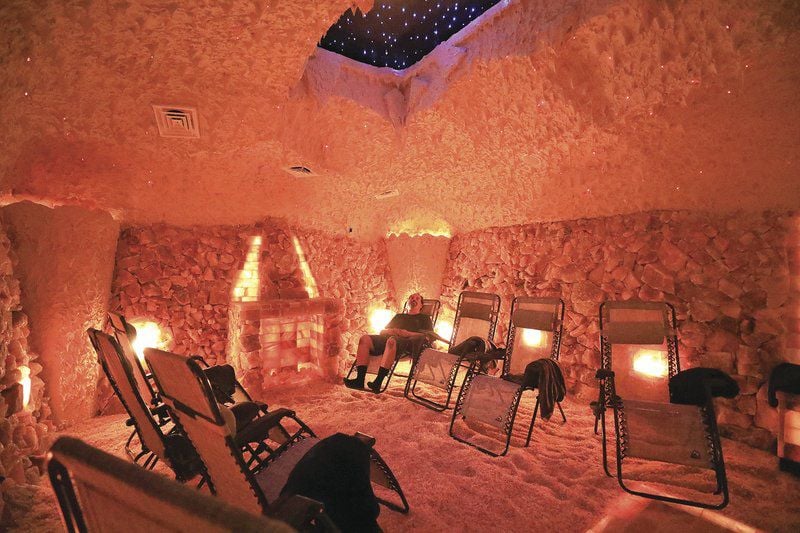

“The practice has been around for centuries, we use it often with patients when we ask them to use saline rinses for their sinuses and gargles for their sore throats,” explains Dr. Halotherapy is considered a valid supplement to traditional medicine. According to Eingorn, only “patients with severe inflammatory disorders, usually requiring medical monitoring, and those with claustrophobia, should not use the salt rooms.”
Halo therapy professional#
Though consulting a medical professional should always be the first step before trying any new alternative therapy, halotherapy is a very safe practice with few contraindications.

Halo therapy full#
View full post on Instagram Should you try halotherapy?
Halo therapy skin#
Since salt is a natural antiseptic and a disinfectant, halotherapy is very effective in treating, and preventing many respiratory illnesses.”įans of the practice commonly report improved sleep, and “There is some evidence that it is helpful in treating some skin disorders,” including eczema, psoriasis, and rosacea, Eingorn says, noting however, that one would have to have the skin exposed during the session. Due to the hydrophilic nature of salt, upon contact with epithelial mucous cells, it will tend to reduce swelling associated with inflamed mucosa. “In the right concentration,” he explains, this “has a therapeutic effect on the respiratory mucosa. “When pure pharmaceutical grade salt (NaCl) is ground into microscopic particles and vaporized into a sealed environment, such as a salt room, or a salt cave, it can be inhaled freely, and will interact with the epithelial cells that line the nasal, sinus, and air passageways,” Eingorn says.

Though advocates for halotherapy claim that the practice can help with countless ailments, respiratory conditions, like sinus infections, allergies, and asthma, show the most promise. Inasmuch as it is a plausible theory, the scientific evidence is lacking to support this belief.” “It is commonly believed that the Himalayan salt will release negative ions (electrons) into the air,” Eingorn says, explaining that “inflamed tissue is usually acidic, that is electron deficient, and thus, more electrons available will help the inflamed cells repair. Quite simply: the entire practice boils down to breathing dry, salty air. View full post on Instagram How does it work and what conditions and ailments does salt room therapy treat? These caves were created to mimic the micro-climate of salt mines and allow visitors to benefit from the inhalation of salt-infused air, and are generally considered more beneficial than those without halogenerators. The second kind uses a halogenerator, a machine which blows tiny particles of pharmaceutical grade salt into the air. Some are exactly as they sound, rooms in which the walls are made of Himalayan salt bricks and the floors covered in salt.

Case in point: anyone who’s ever gargled with salt water to quell a sore throat, or even disinfected a wound with salt water has practiced “wet halotherapy.” Dry halotherapy can take a number of forms- “In some respects, a day at the beach is a Halotherapy session,” explains Alex Eingorn, a chiropractor and co-manager of Breathe Salt Room in Manhattan.Īs far as manmade salt rooms, or salt caves go, there are typically two main kinds. Halotherapy is more familiar than it might initially seem. What are salt caves-and what is halotherapy? Here we asks the experts why sitting in a salt cave may very well be a wonderful treatment for modern ailments. Felikz Boczowski in 1843, who’d taken note of the absence of respiratory problems in salt mine workers. In fact, it was first officially recognized as a therapy by Polish physician Dr. And like other wellness practices, halotherapy dates way back. Halotherapy, or salt therapy, (‘Halo’ is the Greek word for salt) reproduces the naturally occurring environments of salt mines found in countries like Poland and Russia. From freezing chambers to infrared saunas and more, the experience of sitting in unique environments for the sake of wellness is a common pursuit.


 0 kommentar(er)
0 kommentar(er)
